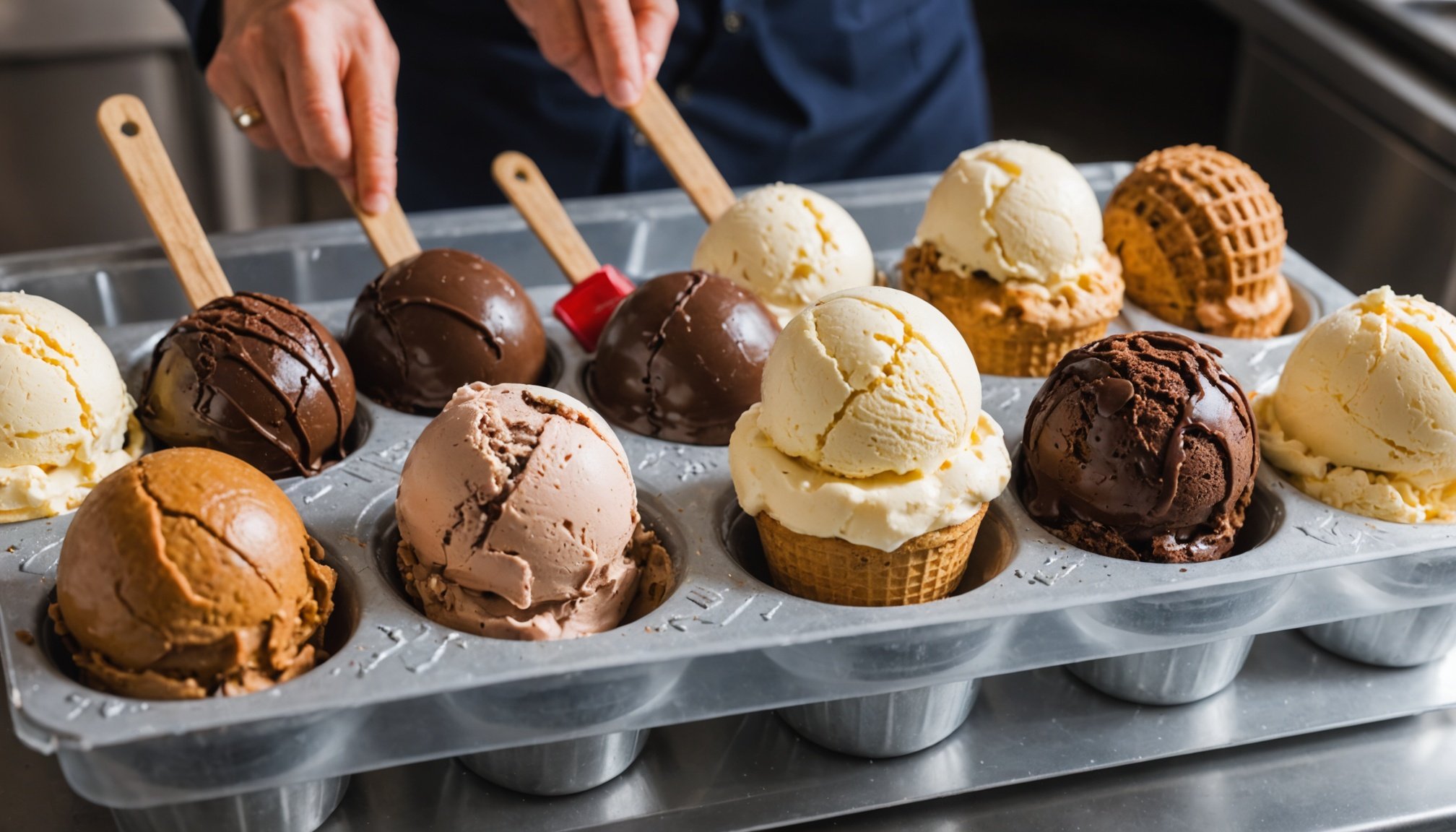Understanding Freezer Burn
Freezer burn poses a significant threat to ice cream quality, detracting from both the texture and flavour. It occurs when moisture sublimates from the food into the surrounding cold environment, leading to moisture loss. This inevitably results in the formation of ice crystals and dulls the creamy texture that defines high-quality ice cream. A loss of moisture also alters the flavour profile, giving a less desirable, often bland taste.
Preventing such detrimental effects is crucial, especially in commercial operations like dessert bars, where preserving the integrity of products is paramount. Moisture loss can undermine the experience for consumers, making robust prevention methods essential.
Topic to read : Revolutionizing Restaurant Service: Balancing Customer Data Personalization with Privacy for Unforgettable Dining Experiences
Ice cream texture depends heavily on controlling environmental factors like humidity and temperature within the storage area. By understanding how freezer burn develops, and implementing preventive strategies, businesses and individuals can maintain the delectable consistency and rich flavours of ice cream. Always ensure ice cream is stored in optimal conditions, maintaining its desired taste and feel.
Proper Storage Techniques
Storing ice cream in airtight containers is crucial to prevent freezer burn and maintain its quality. Containers designed specifically for ice cream storage should be your first choice. These containers are typically made from durable plastic with snug-fitting lids that ensure minimal air exposure. Proper sealing techniques are also vital. Always ensure that the lid fits tightly, leaving no gaps for air to penetrate. This is a critical step because air exposure can lead to moisture loss, compromising both texture and flavour.
This might interest you : Reimagining a Timeless Pub: Harmonizing Heritage with Contemporary Enhancements
Layering methods can also be utilised to safeguard ice cream. Creating a protective layer, such as pressing a piece of wax paper or plastic wrap directly onto the surface of the ice cream before sealing, can help keep it fresh. This serves as an additional barrier against air and moisture loss, further preserving the ice cream’s desired attributes.
When selecting a container, remember that both material quality and design play a role in effective storage. Investing in high-quality, purpose-built containers is a preventive measure that can significantly enhance the longevity of ice cream, especially in commercial settings where maintaining optimal product integrity is paramount.
Maintaining Optimal Freezer Conditions
Ice cream quality greatly depends on maintaining the right freezer temperature. Ideally, the freezer should be set at -18°C (0°F) to properly preserve ice cream. This temperature prevents the formation of large ice crystals that can hinder texture and flavour, ensuring ice cream retains its creamy quality.
Monitoring and ensuring consistent freezer temperatures are equally important. Frequent temperature checks using reliable thermometers can help detect any fluctuations early. Electric monitoring devices that alert you of changes can also be beneficial, providing an additional layer of assurance. Temperature fluctuations can lead to unwanted moisture loss, negatively impacting the appearance and mouthfeel of ice cream.
If temperatures in the freezer are unstable, ice crystals can form and reform repeatedly, causing the ice cream to become grainy. Dessert bars should consider investing in high-quality, calibrated equipment to maintain ideal storage conditions and preserve ice cream’s integrity. For both commercial and home environments, keeping these considerations in mind can ensure that every scoop served is as delightful as intended.
Professional Tips for Dessert Bars
Running a successful dessert bar demands managing both quality and customer satisfaction. Implementing industry best practices can safeguard ice cream quality and enhance customer experience.
Inventory Management
Strategic inventory management plays a vital role. Rotating ice cream stock efficiently reduces spoilage risks, making sure the oldest products are used first. Keeping a close eye on expiration dates and product turnover can prevent losses and maintain flavour integrity.
Serving Techniques
The way ice cream is served can greatly impact its freshness. To reduce exposure to air, promptly return unused portions to the freezer. This limits moisture loss and texture degradation. Techniques such as using pre-chilled serving utensils can minimise melt, retaining the creamy texture customers expect.
Customer Education
Providing education to customers can extend ice cream longevity beyond your premises. Share tips on storing leftover ice cream correctly, such as using airtight containers and maintaining optimal storage conditions. This empowers customers to enjoy their ice cream at its best, even after leaving your dessert bar.











